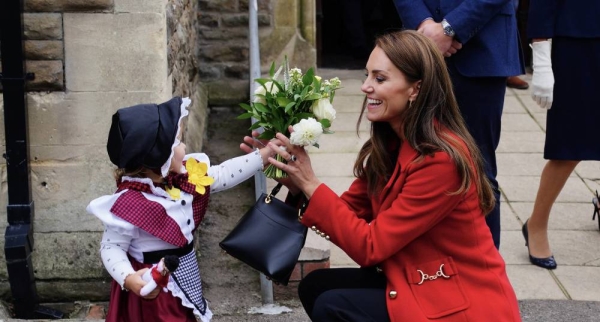
Diana, Princess of Wales, is to be celebrated with a blue plaque in what would have been her 60th birthday year.
English Heritage on Thursday announced its 2021 plaques for six women, who also include the anti-slavery campaigner Ellen Craft; Caroline Norton, who helped change Britain’s divorce laws; and the fashion designer Jean Muir.
Diana was chosen after being put forward by the London asembly, which ran a campaign asking the public to send in suggestions.
“It was considered in the normal way and the panel felt it was a really good case,” said Anna Eavis, English Heritage’s curatorial director. “Diana is undeniably a really significant figure of the late 20th century. She made a huge impact and was very popular.”
Diana also raised awareness of issues including landmines and homelessness, and helped to destigmatise illnesses such as HIV, leprosy and depression, said Eavis. “It seems fitting that we should erect a plaque commemorating her work and influence in what would have been her 60th year.”
The location of the plaque will be revealed closer to the time and will be on a building associated with her life before her marriage to Prince Charles.
The most likely location would surely be the west London flat she shared with three friends, as featured most recently in Netflix’s The Crown. When Olivia Colman’s Queen says Diana’s flat is in Earl’s Court, Helena Bonham Carter’s Princess Margaret replies dismissively: “Prostitutes and Australians. Isn’t that who lives in Earl’s Court?”
The mansion block flat was given to Diana as an 18th birthday present in 1979 by her parents.
Eavis said English Heritage expected to put up 12 blue plaques for the London scheme this year, six of them to women. They are part of a “plaques for women” campaign launched to help redress the historical gender imbalance that has accrued since the first one went up for Lord Byron 150 years ago. About 14% of the 900-plus plaques in place are for women.
“We still have a long way to go,” said Eavis. “But with the help of many excellent nominations from the British public we are headed in the right direction.”
The blue plaque for Ellen Craft will shine light on a 19th-century story that deserves to be better known. She and her husband, William, were slaves in the southern US state of Georgia before managing to escape, eventually arriving in England as refugees in 1850.
The couple toured the UK, lecturing against slavery, before settling in Hammersmith in the house that will bear a plaque in both their names.
Norton’s story is similarly little known today, although her abusive marriage and separation was one of most highly publicised cases in 19th-century Britain. Her determination to fight for fight for custody of her children and her right to property had far-reaching ramifications.
The other plaques will be to Muir, known as the “British Chanel”; Helena Normanton, the first woman in England to practise at the bar, and appear at the high court and Old Bailey; and the crystallographer and peace campaigner Kathleen Lonsdale.
Her plaque is due to be unveiled on Thursday on her childhood Edwardian terrace house in Seven Kings, Ilford, where she lived from 1911 to 1927. Remembered for her groundbreaking work on crystal structures, Lonsdale was a passionate advocate for women in science.












